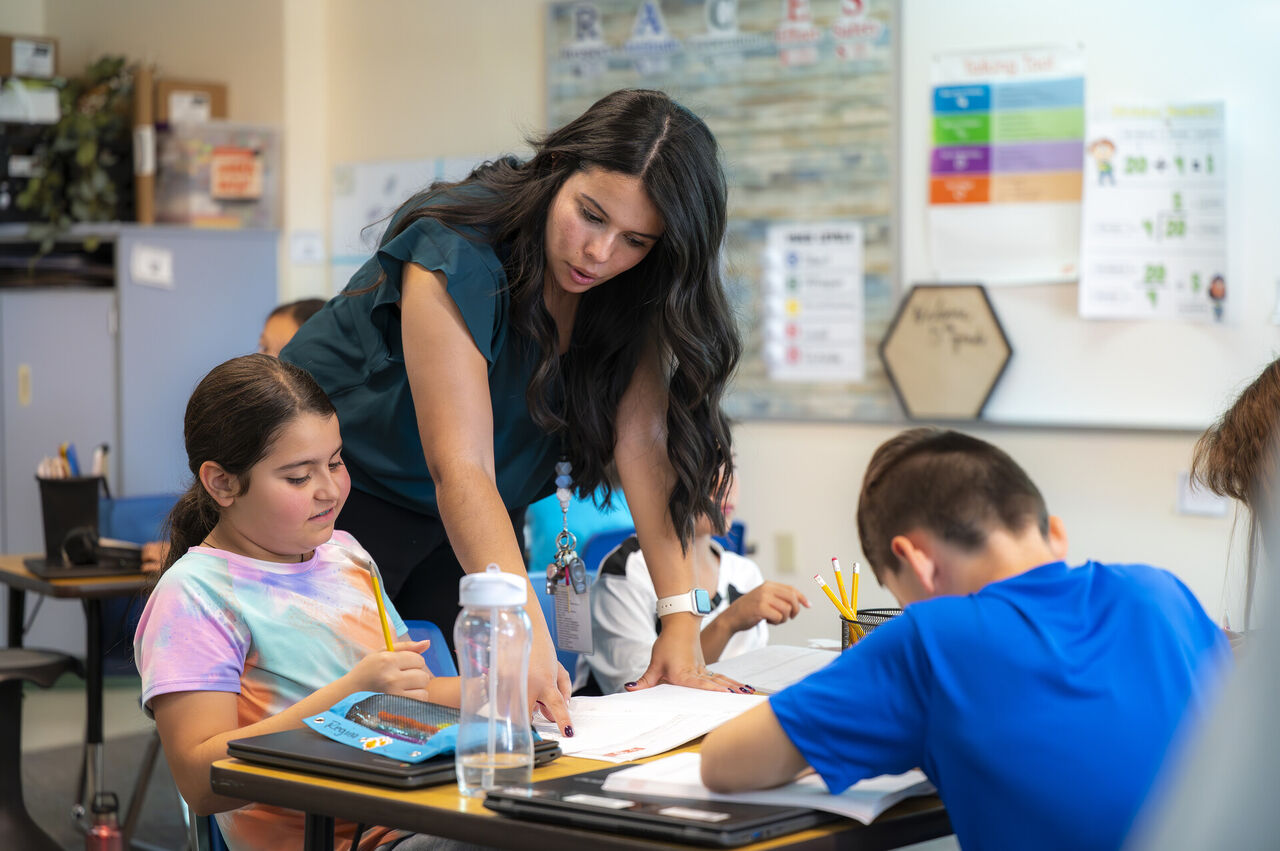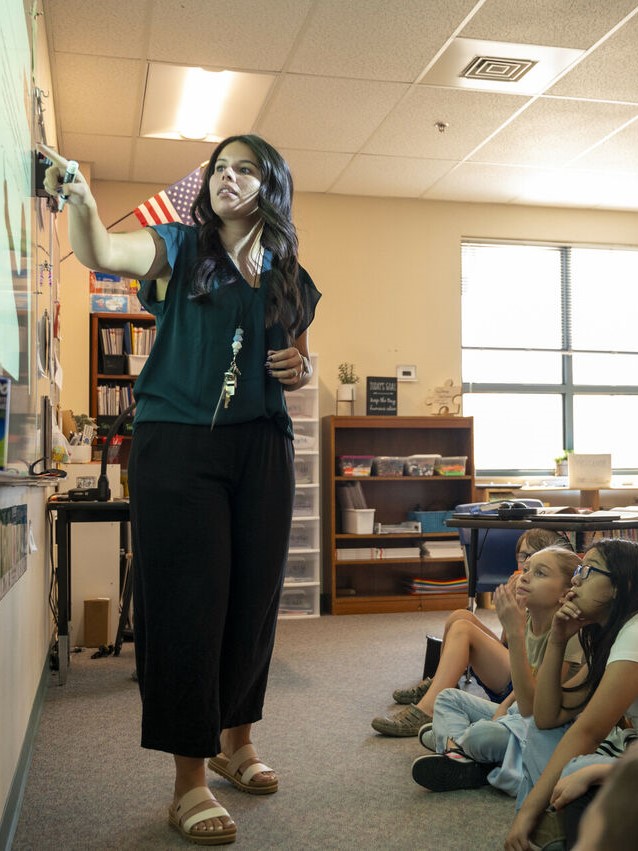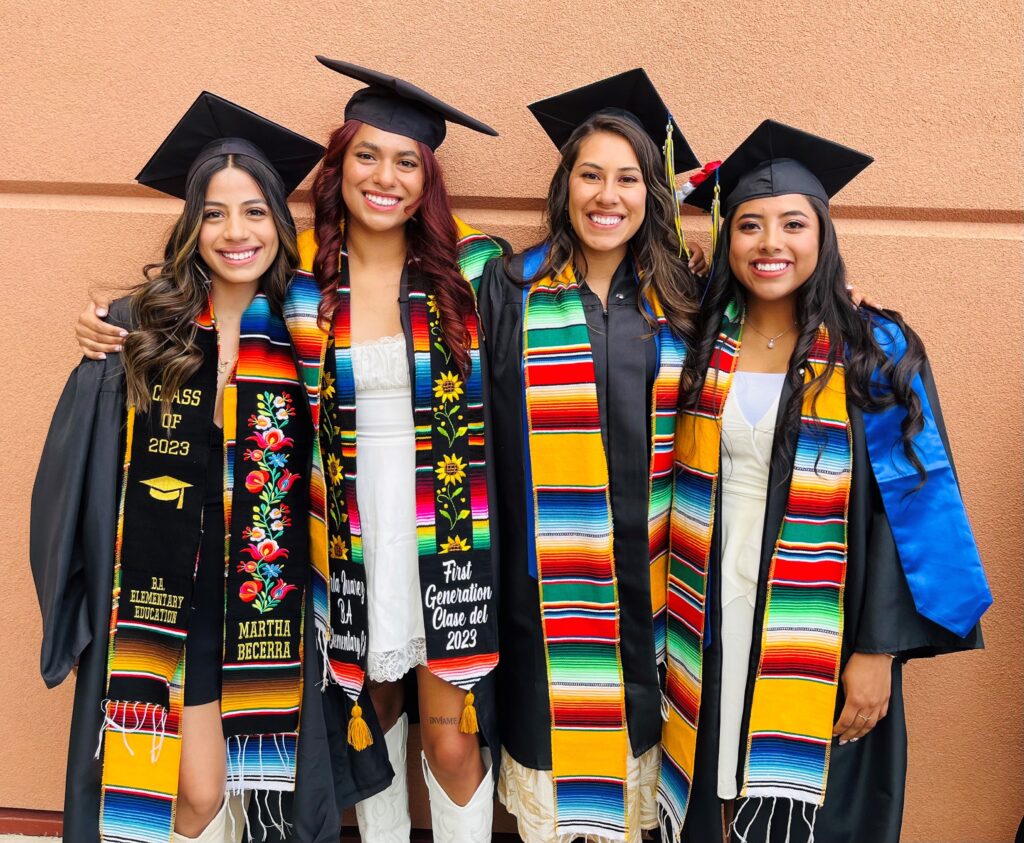
Colorado has made progress in increasing the number of teachers from diverse backgrounds but the teacher pool isn’t diversifying as quickly as other college-educated professionals, according to a new report.
A decade ago, the number of teachers from diverse backgrounds was the same as the number of working adults with degrees of the same race – about 11 percent. By 2022, a gap had formed. The diversity of the teacher workforce fell behind the diversity of college-educated adults. That gap tracks with a similar national gap.
“Teachers of color have a positive impact on all students — especially students of color — yet our teacher workforce continues to lack racial diversity,” says Heather Peske, president of the National Council on Teacher Quality. “Addressing this issue begins with better data.”
The organization tracked data from 2014 to 2022 in a diversity dashboard.
Nationally, about one in five teachers identifies as American Indian, Black, Hispanic, Pacific Islander or multi-racial. It’s slightly less than the percentage of other college-educated adults of the same race. But it’s less than half the share of students of those races.
In Colorado, the gap between students and teachers from historically disadvantaged backgrounds also increased slightly. Nearly 45 percent of Colorado’s students were students of color in 2022 while just 14 percent of teachers were.
Still, the state has made significant gains in the past few years in boosting the number of teachers of color using a number of strategies.
Why is having diverse teachers in the classroom important?
Evidence shows that having more diverse teachers helps student achievement and helps students feel more engaged in school.
Studies show that students feel more cared for, are more motivated by, and learn more from educators who look and sound like them. Research also suggests that all students benefit from having at least one teacher of color, and students of color who have had at least one same-race teacher in third through fifth grades were nearly 40 percent less likely to drop out of high school than those who had not.
State is trying to confront a number of barriers
Teacher pay is a big barrier. Colorado ranks 24th in the nation for average teacher pay but 46th for average teacher starting salary, according to the National Education Association. The state’s per-pupil funding is still well below the national average, which impacts teacher pay. Higher education is costly, and students of color often select career paths that will allow them to pay back student loans.
“When you look at somebody who's selecting their major in college or looking to be a career changer, we're competing against medical profession, we're competing against other professions that have higher incomes,” said Kate Hudnut, senior program manager with TEACH Colorado, a statewide partnership of school districts, prep programs, and state agencies, aimed at expanding the educator workforce.

Higher education is costly and students of color often select career paths that will allow them to pay back student loans.
Teachers of color who leave the profession report feeling isolated as they are often the only educators of color in their schools.
A number of statewide initiatives over the past several years appear to be having an impact.
Colorado saw a 21 percent increase in the percentage of teachers of color between the 2017-18 and 2022-23 school years, while the percentage of students of color increased by 6 percent during that same time period, according to figures from the state department of higher education.
Half a dozen pieces of legislation include:
- A program that allows high school students on a pathway to teaching to enroll in college courses earning credit tuition-free.
- Rural student teaching stipends.
- Educator loan forgiveness of up to $5,000.
- Financial assistance ($10,000) to commit to teaching in a shortage area for three years. Last year a quarter of the recipients were teachers of color.
- A competitive grant program to recruit teachers in high-needs districts. The last three cohorts have had between 28 percent and 32 percent teachers of color.
- Additional ways for first-time teacher candidates to show competency besides an exam that candidates of color disproportionately failed.
Two years ago, a state-mandated working group released a plan with additional strategies to diversify Colorado’s educator workforce.
The state also partners with TEACH Colorado to recruit educators of color. It supports candidates through career coaching, program fee reimbursements, and job preparations. It has a new monthly webinar series for Black, Latino and Indigenous prospective educators beginning in January. More than a quarter of applicants to prep programs it helped in 2022-23 were people of color.
What’s happening at teacher preparation programs?
Many teacher preparation programs at colleges have their own initiatives to recruit candidates of color. Some are more successful than others.
At Colorado Mountain College, though it’s small, 47 percent of its completers in its education preparation program were students of color. There are several reasons for that, according to director Liz Qualman. She describes the program as inexpensive, accessible ( with some online synchronous classes) and community-oriented. It’s the kind of place where students online introduce their pets and family members to teachers.
“In my position as the director, I know all of them their names, most of them have my cell phone number so they'll call me and say ‘I need help’ but that's true of all of our faculty … and I always joke that we're like a big family and the students would confirm that as well.”
The program also embraces practices aligned with teaching historically marginalized students. Many graduates obtain multiple endorsements on their license such as being a bilingual specialist.

“You are more highly qualified than the veteran teachers in the classroom next to you because you have all these qualities, especially to work with diverse populations of K-12 students.”
The college's education program offers two-year and four-year pathways and alternative certifications for people who might already be working at a school district and want to become a teacher. Multiple students have leveraged the state’s rural teaching fellowships and stipends.
Qualman is excited about the school’s new registered teacher apprenticeship program in its first year. About half of the 60 candidates are of color and 20 percent are male. It allows them to get paid as they learn to be a teacher.
“It's probably the most accessible of all of the pathways to becoming a teacher,” said Qualman.
State officials agree that the apprenticeship or the ‘earn while you learn' model shows great promise for diversifying the teacher workforce.









